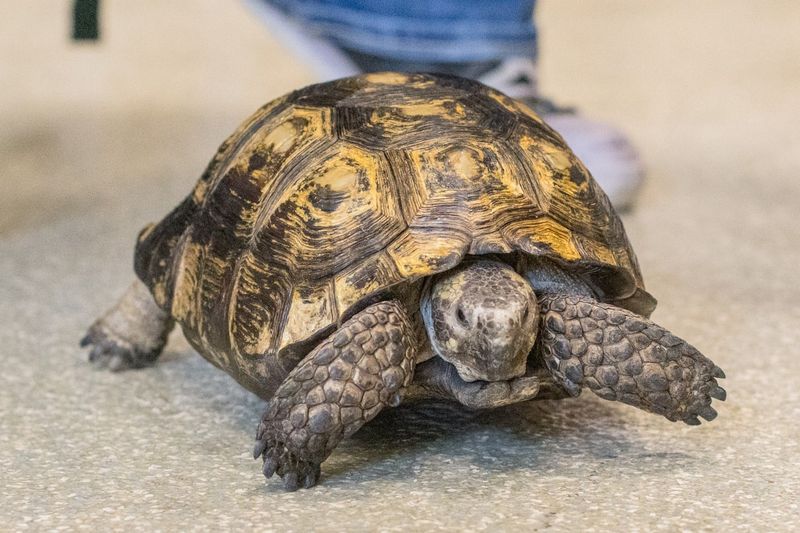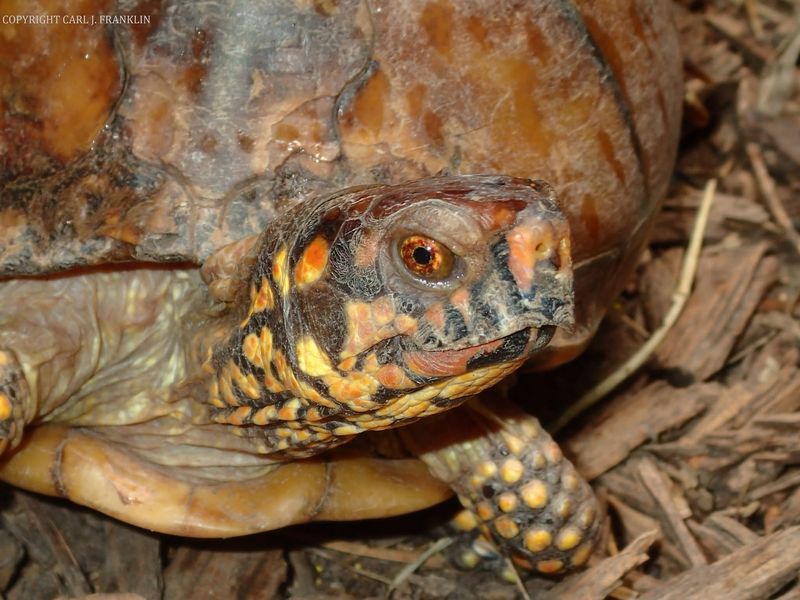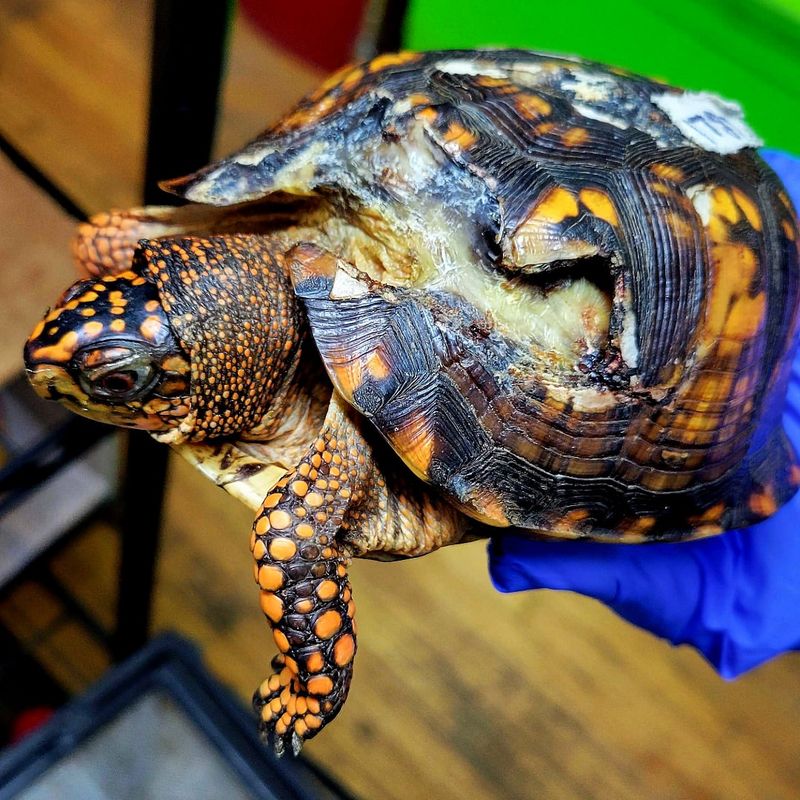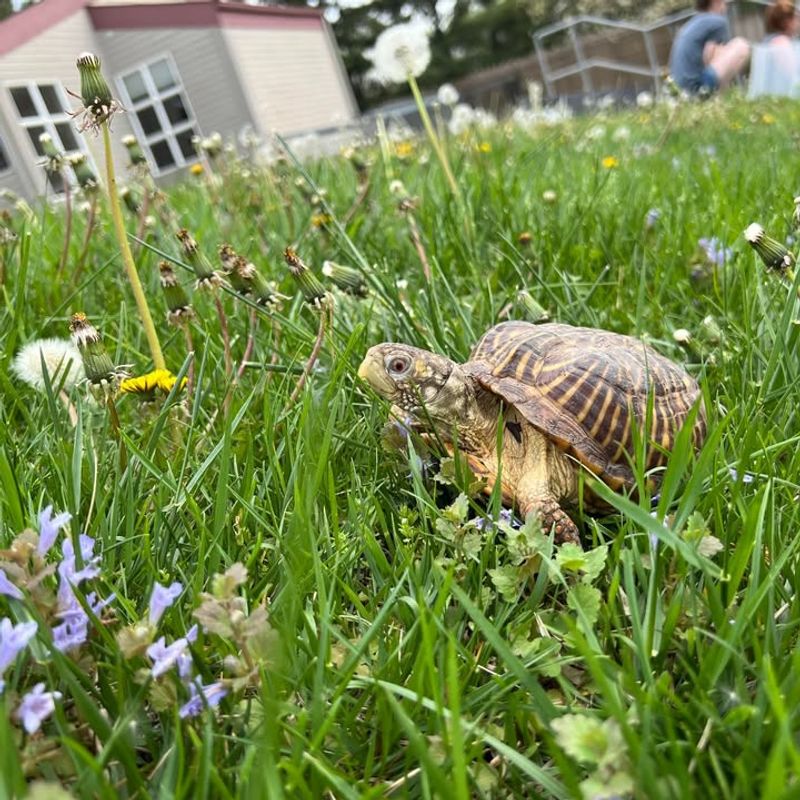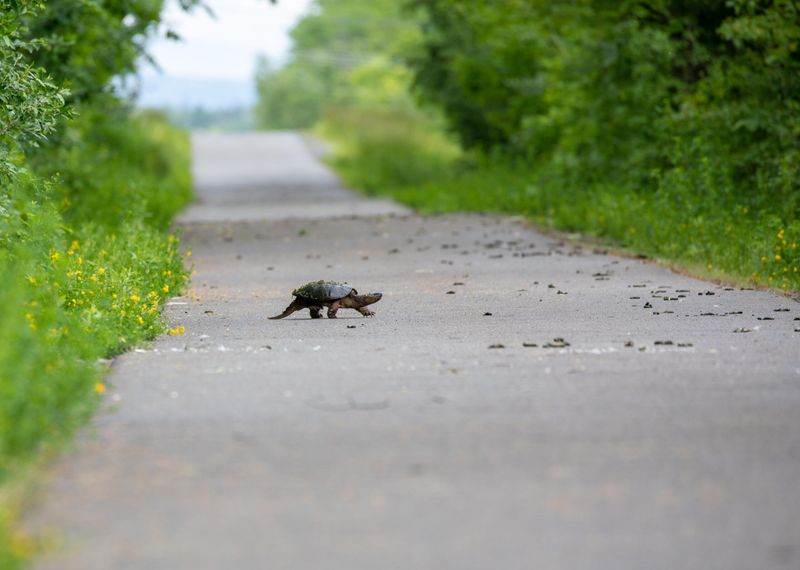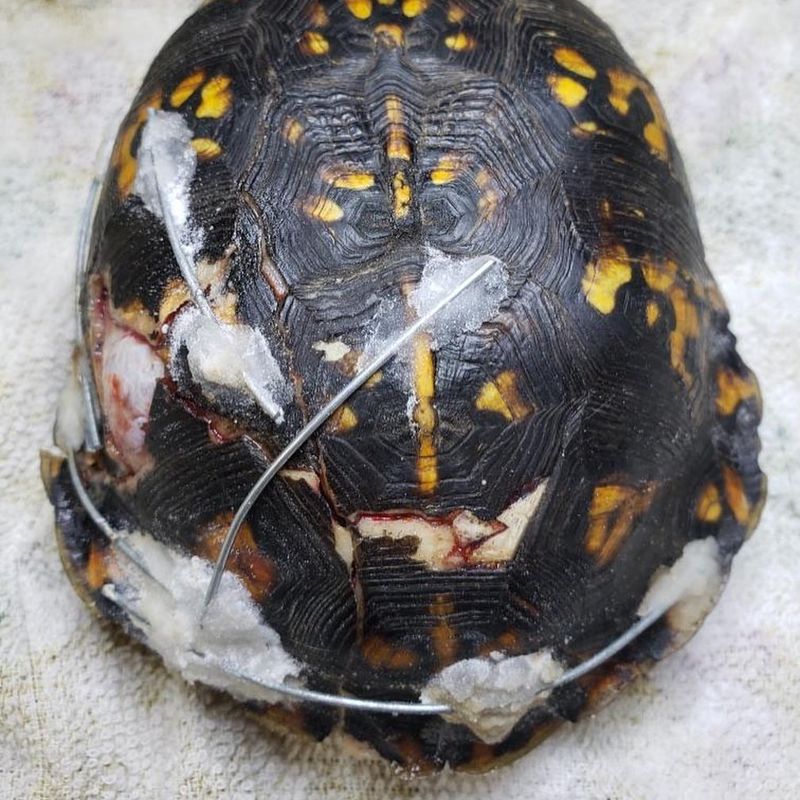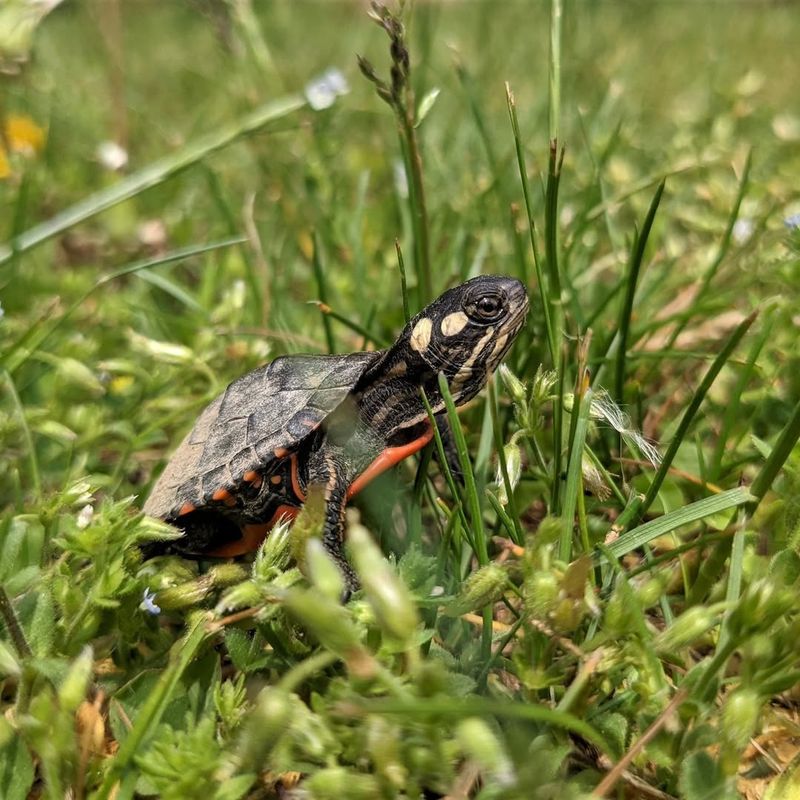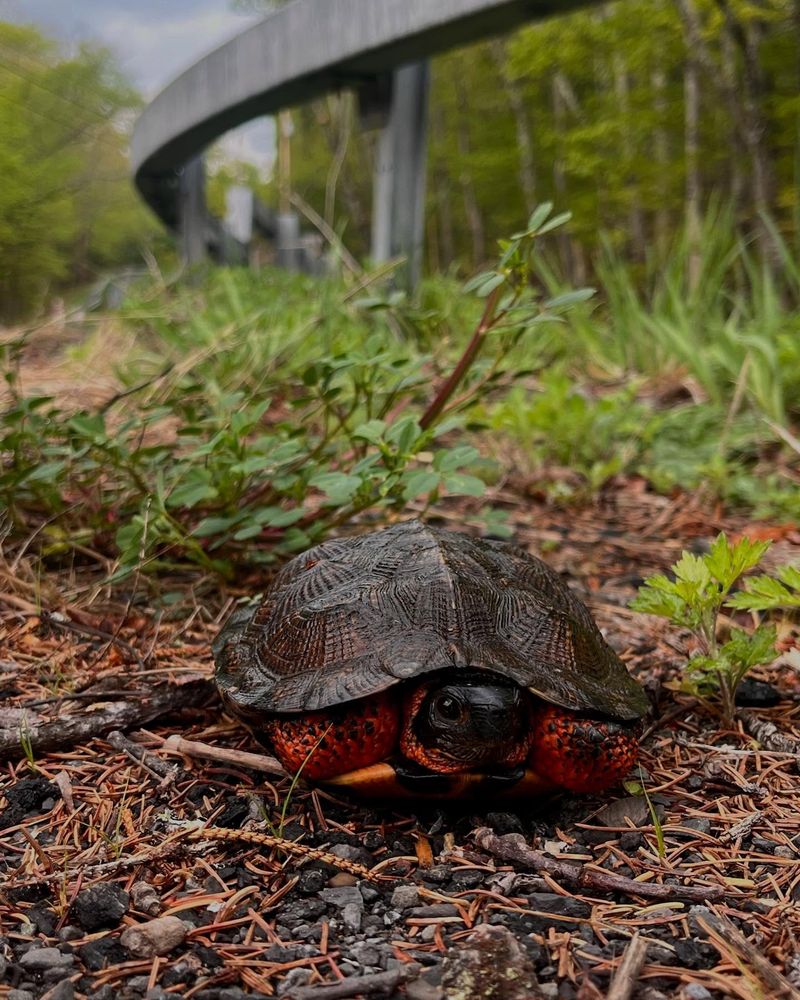Spotting a turtle wandering through your Texas backyard can be an exciting surprise, but it also comes with important responsibilities. Texas is home to many turtle species, some of which are protected by law, so knowing how to respond properly matters.
No matter if the turtle is just passing through or needs your help, following the right steps ensures both you and the turtle stay safe.
1. Observe From A Safe Distance First
Before rushing over, take a moment to watch the turtle from where you stand. Turtles can carry bacteria like salmonella, and some species might bite if they feel threatened.
Watching quietly also helps you figure out what kind of turtle it is and whether it seems injured or healthy. Wild animals often behave unpredictably when approached too quickly.
Giving the turtle space shows respect for wildlife while keeping everyone safe during your initial assessment.
2. Identify The Species If Possible
Texas hosts over a dozen turtle species, from friendly box turtles to snappy alligator snapping turtles. Knowing which type you found determines your next steps since some are protected by state law.
Look for key features like shell shape, color patterns, and size. Box turtles have domed shells and can close up completely, while aquatic turtles have flatter, streamlined shells.
Snap a photo from a safe distance to help with identification later if needed.
3. Check For Obvious Injuries Or Distress
Scan the turtle carefully for any visible problems without touching it yet. Cracks in the shell, bleeding, swollen eyes, or difficulty moving could signal the animal needs medical attention.
Sometimes turtles get hit by lawnmowers or attacked by dogs, leaving them vulnerable. A healthy turtle should have clear eyes, smooth breathing, and the ability to pull its head and legs inside its shell.
Document any concerns with photos to share with wildlife experts.
4. Avoid Relocating Unless Absolutely Necessary
Many people assume turtles need rescuing when they actually know exactly where they are going. Female turtles travel considerable distances to find nesting spots, and moving them disrupts their natural behavior.
Turtles also have strong homing instincts and will spend months trying to return to their territory if relocated. Unless the turtle faces immediate danger like busy traffic or aggressive pets, let it continue its journey.
Nature usually handles itself better than we expect.
5. Move Road-Bound Turtles Carefully
If your yard borders a street and the turtle is heading toward traffic, gentle intervention makes sense. Always move the turtle in the direction it was originally traveling, not where you think it should go.
Pick up the turtle by grasping both sides of the shell near the back legs, keeping it low to the ground. Never grab a turtle by its tail, as this can seriously injure its spine.
Wash your hands thoroughly afterward to prevent bacterial transmission.
6. Provide Temporary Shelter For Injured Turtles
Discovered an injured turtle? Create a temporary recovery space using a cardboard box with air holes and soft towels on the bottom. Keep the box in a quiet, temperature-controlled room away from pets and children.
Skip adding water or food unless a wildlife rehabilitator specifically instructs you to do so. Stressed or injured turtles often refuse to eat anyway, and improper feeding can cause additional problems.
Contact a licensed wildlife rehabilitator as soon as possible for guidance.
7. Contact Texas Wildlife Authorities
When in doubt about what to do, reach out to Texas Parks and Wildlife Department or a local wildlife rehabilitation center. These experts can identify the species, advise on legal requirements, and provide care instructions.
Some Texas turtles, like the Texas tortoise, are protected species, and possessing them without permits is illegal. Professional guidance prevents accidental law-breaking while ensuring the turtle receives appropriate help.
Keep the contact numbers saved for future wildlife encounters too.
8. Create A Turtle-Friendly Yard Environment
Turn your yard into a safe haven by incorporating turtle-friendly features. Native plants provide natural food sources and shelter, while shallow water dishes offer hydration stations during hot Texas summers.
Avoid using pesticides and herbicides that can poison turtles and their prey. Keep grass at moderate heights so turtles can navigate easily without getting lost in tall vegetation.
Building wildlife corridors with your neighbors creates safer passage routes for traveling turtles throughout the community.


